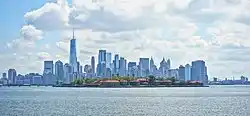
New York State has long served as a primary gateway to the United States, welcoming diverse groups of migrants and immigrants across more than four centuries. Its coastal location on the Atlantic seaboard, combined with the allure of new economic and social opportunities, made New York an attractive landing point for those seeking religious freedom, political stability, or an escape from oppression and hardship. Over time, these arrivals—from early Dutch and English colonists to waves of Irish, Italian, African American, Jewish, Puerto Rican, Latin American, and Asian communities—shaped the state’s cultural fabric, populated its expanding urban centers, and contributed to its evolution as an economic powerhouse.
By following maritime trade routes, constructing waterways like the Erie Canal, and later building extensive rail networks, migrants dispersed throughout New York’s cities, industrial hubs, and farmlands. Each incoming population brought distinct traditions, languages, and customs, which helped foster the state’s hallmark multicultural identity. The following table outlines key historical migration movements into and within New York, highlighting origins, arrival locations, and principal motivating factors for each group. These patterns provide crucial context for understanding how New York developed its diverse social, political, and economic structures, ultimately influencing the broader trajectory of American history.
Research your ancestors on MyHeritage
List of New York State historical migration routesList of New York State historical migration routes
| Time Period | Ethnic Group | Origination Location | Arrival Location (NY) | Motivating Factors |
|---|---|---|---|---|
| Early 17th century (c. 1624–1664) | Dutch colonists | The Netherlands | New Amsterdam (now NYC), Hudson River Valley | Trade opportunities (fur trade), expansion of Dutch colonial power, religious freedom, prospect of land ownership |
| Mid-17th century (c. 1664–1700) | English settlers | England | New York City, Long Island, Hudson Valley | Expansion of English colonial empire, seeking new opportunities (land, commerce), religious freedom |
| 18th century (1700s) | Enslaved Africans | West and Central Africa (via Caribbean & direct) | New York City, Hudson Valley plantations | Forced migration due to transatlantic slave trade; labor demands in colonial economy |
| Late 18th–early 19th century | Palatine Germans | Southwestern regions of present-day Germany | Mohawk Valley, Schoharie Valley | Fleeing war-ravaged homelands (War of Spanish Succession), seeking land and better economic opportunities |
| Early 19th century (c. 1820–1850) | Irish (pre-Famine) | Ireland | New York City, canal towns along the Erie Canal | Economic hardship, political unrest, opportunities for canal construction jobs (e.g., Erie Canal) |
| Mid-19th century (1845–1855) | Irish (Famine-era) | Ireland | New York City, upstate industrial centers | Potato Famine in Ireland, mass starvation, search for survival and jobs |
| Mid-19th century (1840s–1880s) | Germans | German states (various regions) | New York City, Buffalo, Rochester | Economic opportunities, political upheaval (e.g., 1848 revolutions), availability of farmland |
| Late 19th century (1870s–1910s) | Italian immigrants | Southern Italy | New York City (especially Lower Manhattan) | Economic hardship in southern Italy, agricultural failures, demand for labor in American cities |
| Late 19th–early 20th century (1880s–1920s) | Eastern European Jews | Russian Empire, Austro-Hungarian Empire, Poland | Lower East Side of Manhattan, Brooklyn | Pogroms and religious persecution, restrictive laws in Eastern Europe, hope for economic advancement |
| Early to mid-20th century (c. 1910–1970) | African Americans (Great Migration) | Southern United States | Harlem (NYC), Buffalo, Rochester, Syracuse | Escaping Jim Crow laws, racial violence, seeking industrial jobs and better social conditions |
| Mid-20th century (1940s–1960s) | Puerto Ricans (post-WWII migration) | Puerto Rico | NYC (especially East Harlem, the Bronx) | Economic changes in Puerto Rico (Operation Bootstrap), labor recruitment in U.S., family reunification |
| Late 20th century (1960s–1990s) | Latin American immigrants | Mexico, Dominican Republic, Colombia, etc. | NYC (Queens, Brooklyn, the Bronx), Long Island | Economic opportunities, political unrest in home countries, family ties and established migrant communities |
| Late 20th–21st century (1970s–present) | Asian immigrants (Chinese, Korean, South Asian, etc.) | China, Korea, India, Pakistan, Bangladesh, etc. | NYC (Chinatown, Flushing, Jackson Heights), upstate university towns | Educational and job opportunities, family reunification, changes in U.S. immigration law |

